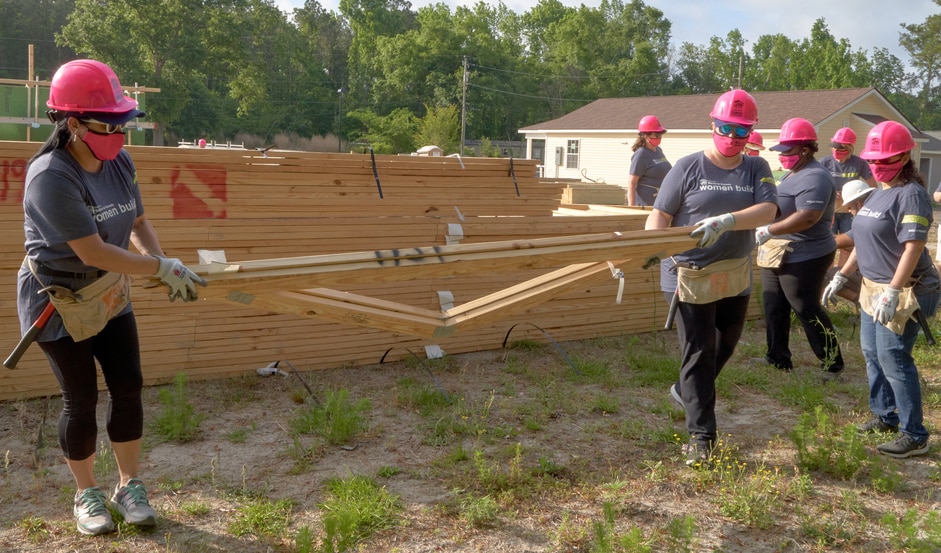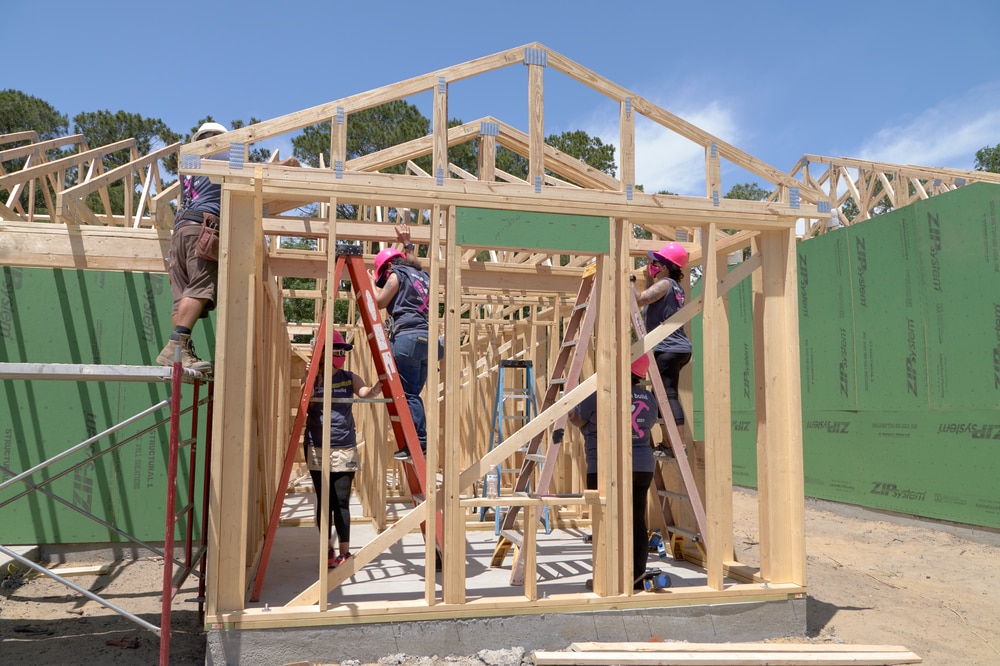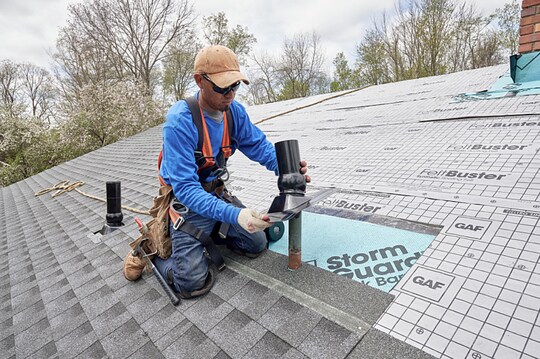
Las tasas de voluntariado han aumentando de manera constante en los últimos años y los empleados están buscando más oportunidades para poner en práctica sus habilidades y tal vez incluso aprender nuevas habilidades en el proceso. Una organización de suele fomentar un poco de ambos es Habitat for Humanity, donde los voluntarios construyen viviendas para familias necesitadas en todo EE. UU.
GAF lleva mucho tiempo inspirando a los empleados para que se ofrezcan como voluntarios en las comunidades donde viven y trabajan aportando su entusiasmo y experiencia a las organizaciones locales. A principios de mayo, dos empleadas de la planta de GAF en Burgaw, NC, Suzanne Amigo, especialista sénior en Ventas Minoristas y Soporte Técnico de Productos de LL Building Products, y Jodi Rose, asociada de Servicios Públicos en el área de Punch Press, hicieron precisamente eso. Pasaron el día trabajando como voluntarias de Mujeres construyen de Hábitat para la Humanidad en Cape Fear con diez colegas más de la planta de GAF en Burgaw.
Aquí, comparten sus experiencias y cuentan por qué el voluntariado les resultó tan gratificante.
Una mano amiga para un nuevo comienzo
Después de trabajar para GAF durante 23 años, el primer proyecto de Hábitat para la Humanidad de Amigo implicó la construcción de una casa unifamiliar, que requirió trasladar las vigas del techo a mano desde la zona de entrega a la casa e instalar un contratechado de pared exterior en ambos extremos de la casa.
"Me encanta la oportunidad que GAF ofrece a cada empleado al permitirnos tener tiempo de voluntariado. Saber que estaba ayudando a una joven a construir su propia casa fue muy gratificante", dice Amigo.
Rose, que se unió a GAF hace unos 24 años, agrega que considera que donar su tiempo es incluso más valioso que hacer una donación financiera a una organización benéfica. "Siempre quise ser parte de algo como esto", dice Rose. “Cuando se presentó la oportunidad, no pude resistirme a decir que sí.

Aprender en el trabajo
Hábitat para la Humanidad organiza varios proyectos de Mujeres construyen cada año y proporciona capacitación y suministros de expertos al equipo de construcción voluntario. Entre aprender acerca del trabajo que se tenía que hacer y seguir las instrucciones para tareas específicas, había mucho que hacer. "Se volvió más divertido a medida que avanzaba el día y fue fascinante aprender cómo se construye realmente una casa", recuerda Rose.
Según Amigo, la atmósfera en el lugar de trabajo estaba muy centrada en las tareas que tenían entre manos. La seguridad fue la preocupación número uno y aprender nuevas habilidades fue una ventaja adicional. Sus experiencias la dejaron muy impresionada con la forma en que Hábitat para la Humanidad realiza sus construcciones.
"Ese día, supe que nuestra sede local de Hábitat para la Humanidad está construyendo una comunidad de hogares en nuestra área y están cambiando vidas todos los días... Aprecio mucho más lo que hacen y absolutamente me ofrecería como voluntaria para trabajar en otro proyecto de nuevo", dice.
Construir una comunidad e inspirar a voluntarios
Rose explicó que su día en la construcción comenzaba ayudando a reorganizar un poco de madera. Luego, ayudaba al equipo a colocar los grandes enrejados para el techo y a martillar algunos de los enrejados más pequeños en la parte delantera de la casa. La futura propietaria, que es sorda, trabajó junto a las voluntarias de GAF ese día, ayudando a construir la casa de sus sueños.
"Fue muy gratificante saber que ayudé a construir parte de una habitación y definitivamente quiero hacer esto de nuevo", dice Rose. "También animaría a mis compañeros de trabajo a que consideren ofrecerse como voluntarios de Hábitat para la Humanidad".
Amigo agrega que cree que apoyar a la comunidad donde vive y trabaja es algo que toda persona debería hacer.
"Retribuir si podemos es muy importante. Me gusta pensar que tiene como un efecto de replicación: alguien que ve una buena acción se siente obligado a hacer algo bueno por otra persona. Si alguna vez me encontrara en la misma situación, esperaría que alguien interviniera para ayudarme de la misma manera que yo he ayudado a los demás".
Para ambas mujeres, la mejor parte de su experiencia de Hábitat para la Humanidad fue saber que una familia joven tendría un nuevo hogar gracias a sus esfuerzos colectivos.

Puedes obtener más información sobre cómo GAF está retribuyendo a sus comunidades en el Informe de impacto social de la empresa. Visita la página Carrera profesional de GAF para conocer oportunidades para trabajar para una organización que se compromete a generar un impacto positivo en nuestras comunidades.



